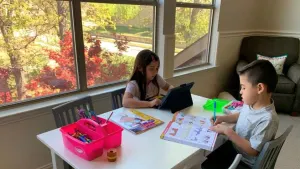More Stories
The Centers for Disease Control and Prevention has released its long-awaited tips for minimizing everyday risks of getting and spreading COVID-19.
As a reminder, the CDC says if you have COVID-19, have symptoms consistent with COVID-19, or have been in close contact with someone who has COVID-19, it is important to stay home and away from other people.
In general, the more closely you interact with others and the longer that interaction, the higher the risk of COVID-19 spread. When venturing out, these 15 questions can help you determine your level of risk:
1. How many people will you interact with?
Interacting with more people raises your risk. Being in a group with people who aren't social distancing or wearing cloth face coverings increases your risk. Engaging with new people (e.g., those who don’t live with you) also raises your risk. Some people have the virus and don’t have any symptoms, and it is not yet known how often people without symptoms can transmit the virus to others.
Interacting with more people raises your risk. Being in a group with people who aren't social distancing or wearing cloth face coverings increases your risk. Engaging with new people (e.g., those who don’t live with you) also raises your risk. Some people have the virus and don’t have any symptoms, and it is not yet known how often people without symptoms can transmit the virus to others.
2. Can you keep six feet of space between you and others? Will you be outdoors or indoors?
The closer you are to other people who may be infected, the greater your risk of getting sick. Keeping distance from other people is especially important for people who are at higher risk for severe illness, such as older adults and those with underlying medical conditions. Indoor spaces are more risky than outdoor spaces where it might be harder to keep people apart and there’s less ventilation.
The closer you are to other people who may be infected, the greater your risk of getting sick. Keeping distance from other people is especially important for people who are at higher risk for severe illness, such as older adults and those with underlying medical conditions. Indoor spaces are more risky than outdoor spaces where it might be harder to keep people apart and there’s less ventilation.
3. What’s the length of time that you will be interacting with people?
Spending more time with people who may be infected increases your risk of becoming infected. Spending more time with people increases their risk of becoming infected if there is any chance that you may already be infected.
Spending more time with people who may be infected increases your risk of becoming infected. Spending more time with people increases their risk of becoming infected if there is any chance that you may already be infected.
4. Is COVID-19 spreading in my community?
Find out by viewing the latest COVID-19 information and a map of states with reported COVID-19 infections.
Find out by viewing the latest COVID-19 information and a map of states with reported COVID-19 infections.
5. What are the local orders in my community?
Review updates from your local health department to better understand the situation in your community and what local orders are in place in your community.
Review updates from your local health department to better understand the situation in your community and what local orders are in place in your community.
6. Will my activity put me in close contact with others?
Practice social distancing because COVID-19 spreads mainly among people who are in close contact with others. It’s important that you and the people around you wear a cloth face covering when in public and particularly when it’s difficult to stay six feet away from others consistently. Choose outdoor activities and places where it’s easy to stay six feet apart, like parks and open-air facilities. Look for physical barriers, like plexiglass screens or modified layouts, that help you keep your distance from others. Use visual reminders, like signs, chair arrangements, markings on the floor, or arrows, to help remind you to keep your distance from others.
Practice social distancing because COVID-19 spreads mainly among people who are in close contact with others. It’s important that you and the people around you wear a cloth face covering when in public and particularly when it’s difficult to stay six feet away from others consistently. Choose outdoor activities and places where it’s easy to stay six feet apart, like parks and open-air facilities. Look for physical barriers, like plexiglass screens or modified layouts, that help you keep your distance from others. Use visual reminders, like signs, chair arrangements, markings on the floor, or arrows, to help remind you to keep your distance from others.
7. Am I at risk for severe illness?
Older adults and people of any age who have serious underlying medical conditions might be at higher risk for severe illness from COVID-19.
Older adults and people of any age who have serious underlying medical conditions might be at higher risk for severe illness from COVID-19.
8. Do I live with someone who is at risk for severe illness?
If you live with older adults or someone with certain underlying medical conditions, then you and all family members should take extra precautions to minimize risk.
If you live with older adults or someone with certain underlying medical conditions, then you and all family members should take extra precautions to minimize risk.
9. Do I practice everyday preventive actions?
Continue to protect yourself by practicing everyday preventive actions, like monitoring yourself for symptoms, not touching your face with unwashed hands, washing your hands often, social distancing, disinfecting surfaces, wearing cloth face covers, and staying home if you are sick.
Continue to protect yourself by practicing everyday preventive actions, like monitoring yourself for symptoms, not touching your face with unwashed hands, washing your hands often, social distancing, disinfecting surfaces, wearing cloth face covers, and staying home if you are sick.
10. Will I have to share any items, equipment, or tools with other people?
Choose places where there is limited sharing of items and where any items that are shared are thoroughly cleaned and disinfected between uses. You can also choose to visit places that share, post, or announce that they have increased cleaning and disinfection to protect others from COVID-19.
Choose places where there is limited sharing of items and where any items that are shared are thoroughly cleaned and disinfected between uses. You can also choose to visit places that share, post, or announce that they have increased cleaning and disinfection to protect others from COVID-19.
11. Will I need to take public transportation to get to the activity?
Public transit can put you in close contact with others. When using public transportation, follow CDC’s guidance on how to protect yourself when using transportation.
Public transit can put you in close contact with others. When using public transportation, follow CDC’s guidance on how to protect yourself when using transportation.
12. Does my activity require travel to another community?
Before considering trips outside your community, consult CDC’s travel considerations.
Before considering trips outside your community, consult CDC’s travel considerations.
13. If I get sick with COVID-19, will I have to miss work or school?
If you are sick with COVID-19, stay home. Also find out about your work or school’s telework or sick leave policy.
If you are sick with COVID-19, stay home. Also find out about your work or school’s telework or sick leave policy.
14. Do I know what to do if I get sick?
Know the steps to help prevent the spread of COVID-19 if you are sick.
Know the steps to help prevent the spread of COVID-19 if you are sick.
15. What items should I have on hand when going out?
A cloth face covering, tissues and hand sanitizer with at least 60% alcohol, if possible.
A cloth face covering, tissues and hand sanitizer with at least 60% alcohol, if possible.
More from News 12
1:58
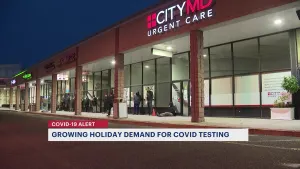
Lines stretch out at Wall Township COVID-19 testing site ahead of Christmas holiday
0:33
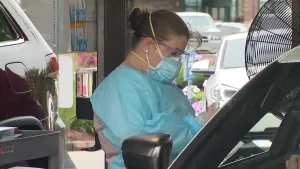
Teaneck COVID-19 testing drive-thru site reopens as cases surge

Your Coronavirus 2020 Photos
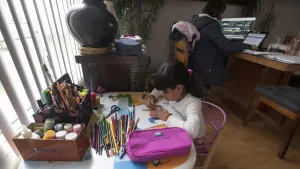
10 online learning tools for students to use at home
11:21:40
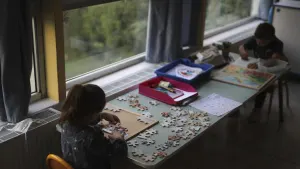
6 tips for home schooling children and remote learning
